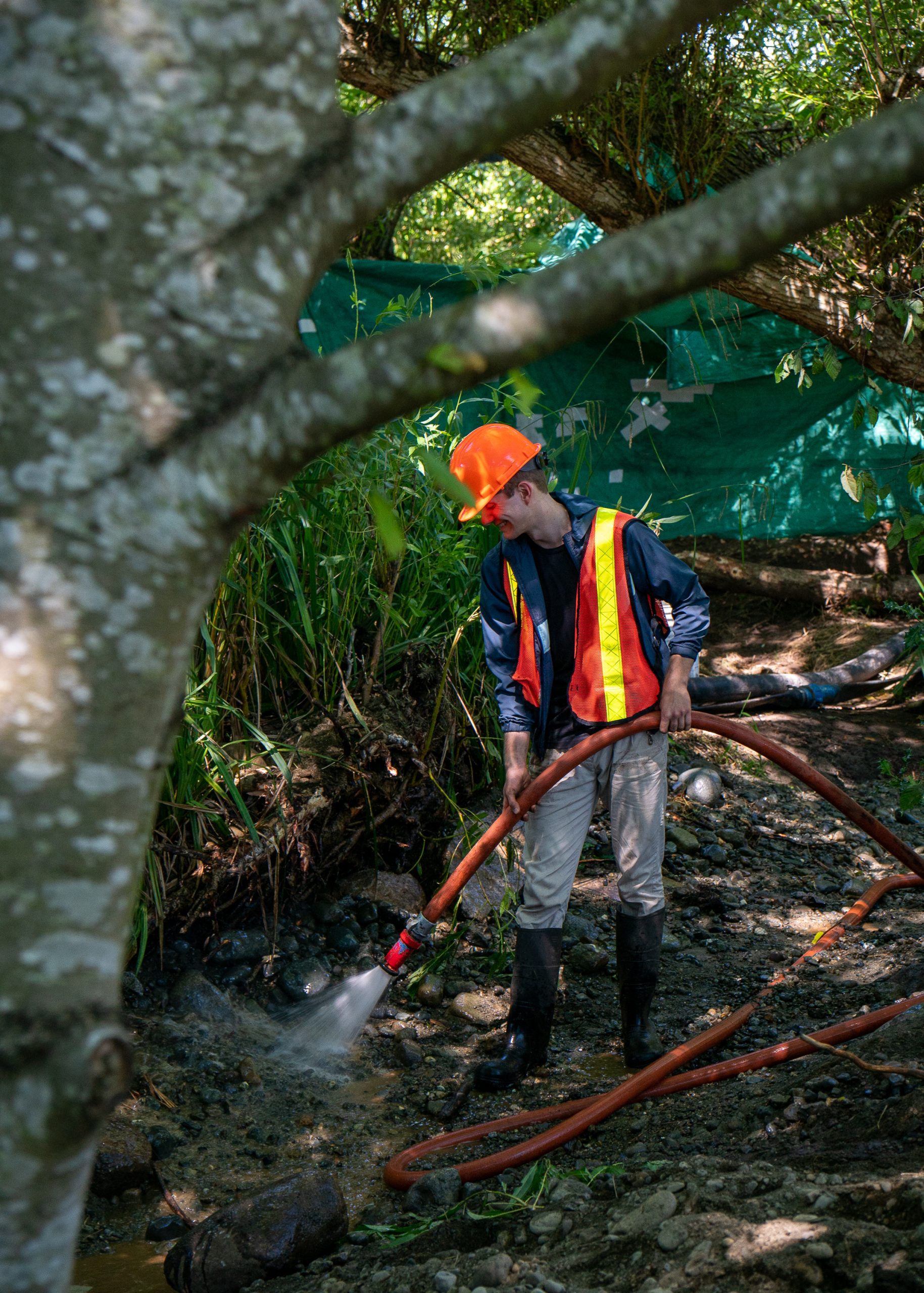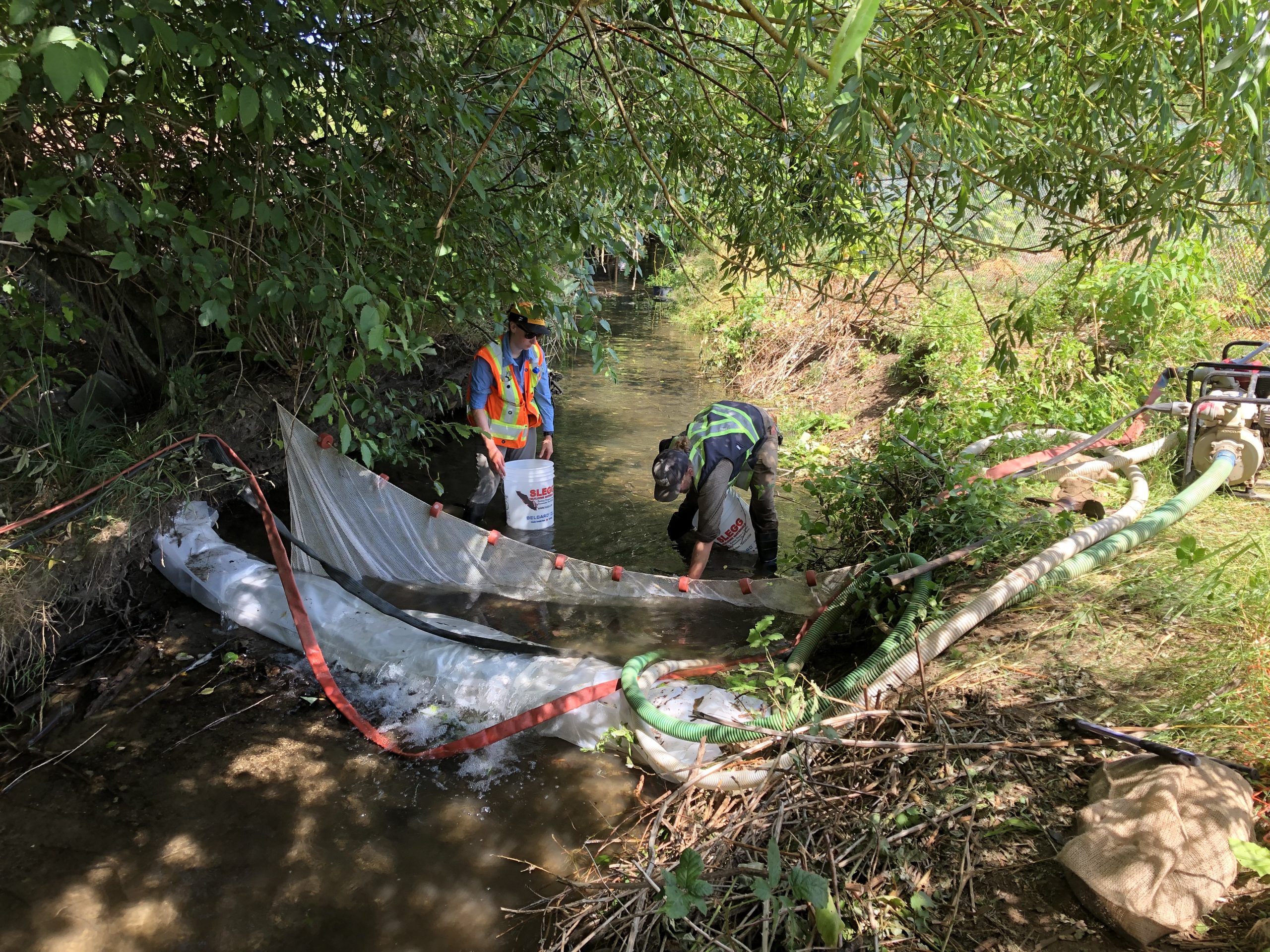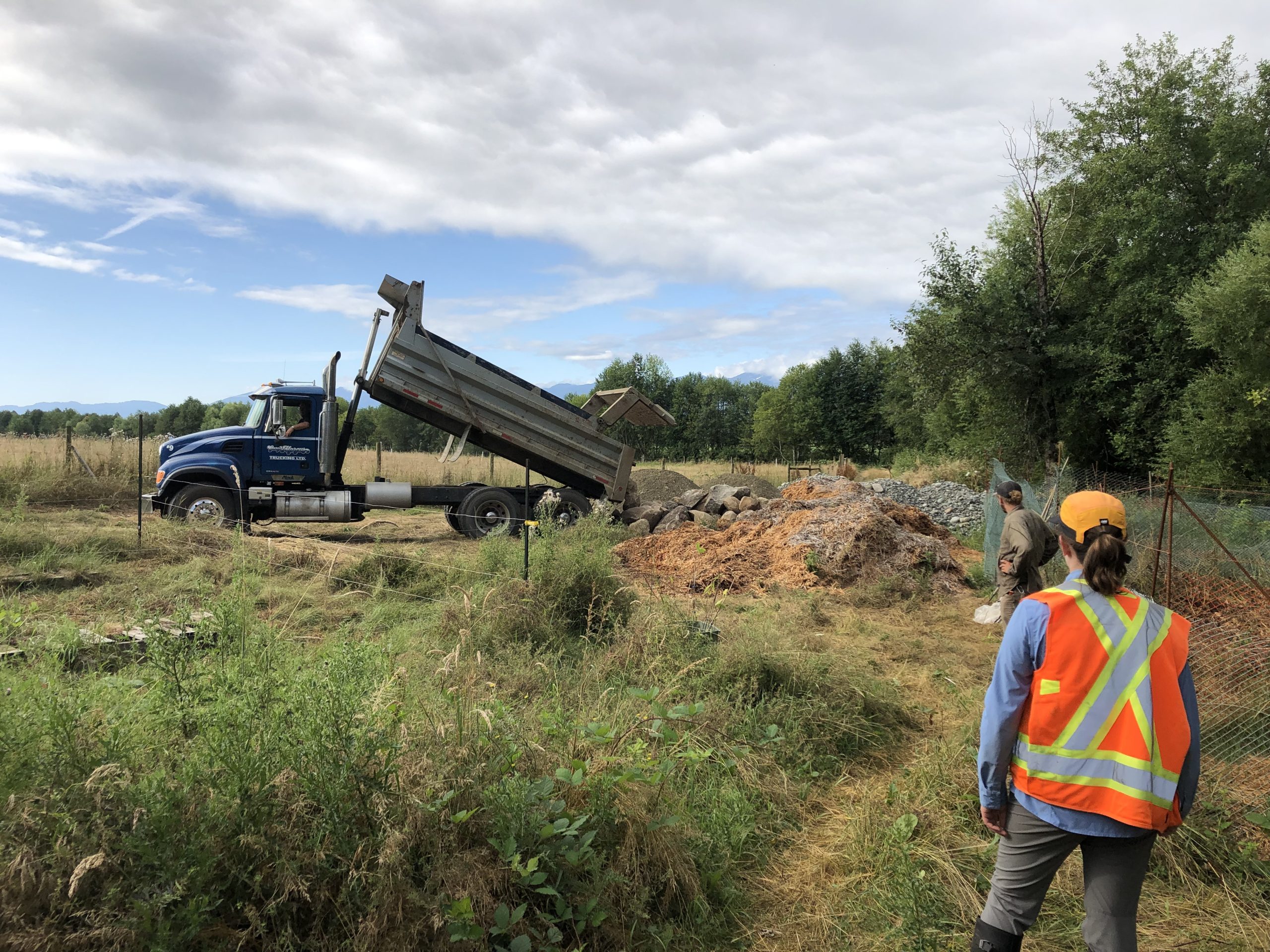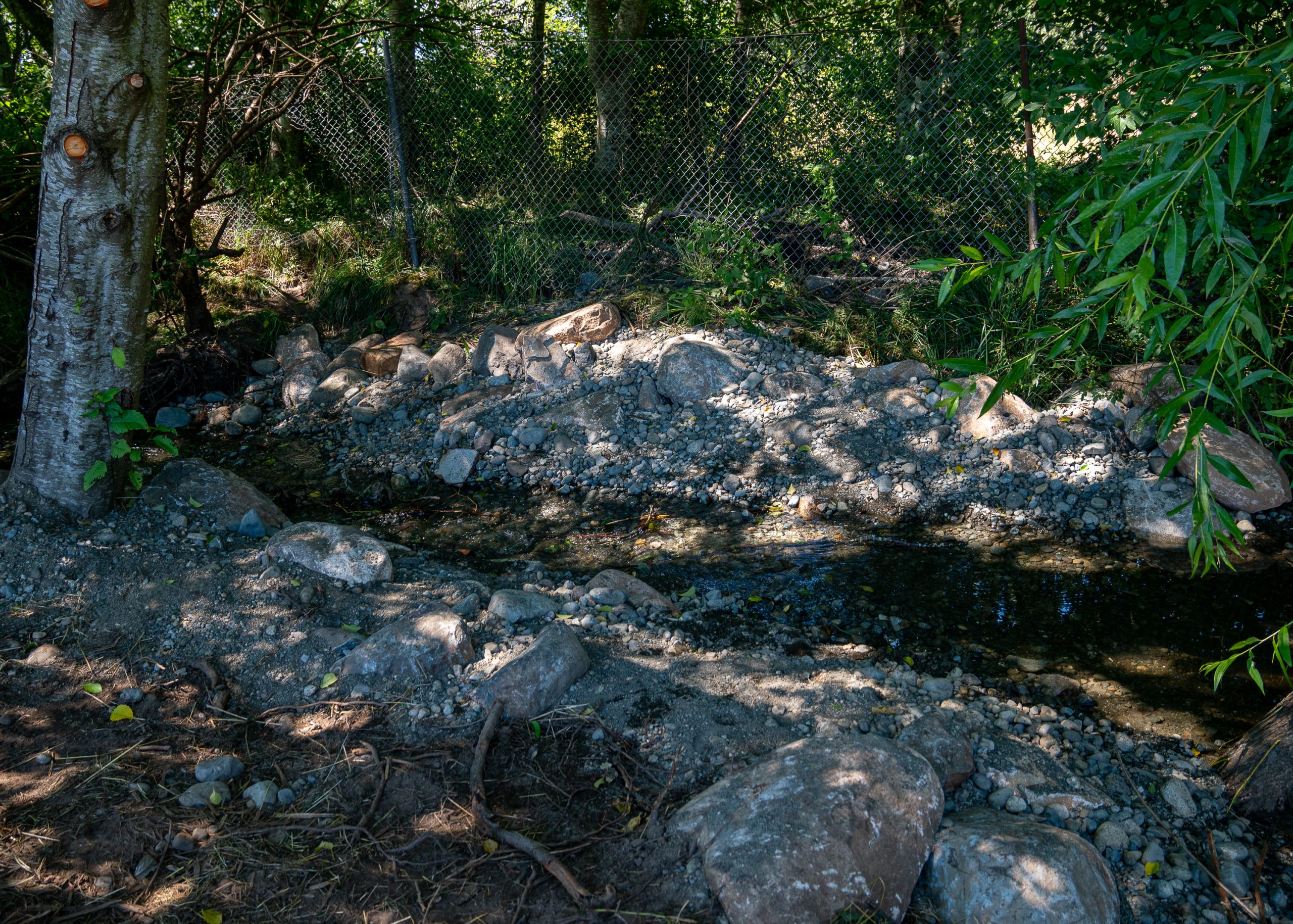Technician Tuesday Report – In-Stream Construction at Glen Urquhart – August 9
Cain Tipton spraying the creek bed with water to remove fine materials ~ By L. Stewart
De-Watering a section of Glen Urquhart ~ By C. Tipton
Materials drop off for Glen Urquhart construction ~ By C. Tipton
New riffle construction at Glen Urquhart ~ By L. Stewart
Before in-stream work can begin, the fish must be safely removed from the work area and the water drained. To do this, fish traps were set overnight and checked the morning of construction and any fish that were not captured were caught in a net by hand. The fish were moved to a safe area of the creek downstream where they would not be affected by work activities.
Once the creek was clear, the water had to be drained. Cain and Renée laboriously prepared sand bags that would be used in conjunction with a plastic poly material to create a dam. The water contained within the dam was then drained using a system of hoses and pumps. Because the team has had to complete this process several times, they have learned how to dam the creek very effectively; preparation is key to prevent leaking barriers!
Water quality was continuously monitored to ensure areas of the creek that were disconnected from de-watering contained safe levels of dissolved oxygen for the species living there. If oxygen dipped below safe thresholds, water was pumped in to introduce more oxygen.
Did you know fish and other aquatic animals breathe oxygen too? Oxygen gas that is dissolved in water is absorbed directly from the water into their bloodstream through their gills.
Taking a break from working in the wet, Cain and Renée planted fall rye (Secale cereale) in areas where an excavator had removed large amounts of blackberry the previous week. By planting fall rye along the bank, the plants will help to stabilize the area when their roots begin to grow deep and spread through the soil. This will help hold the bank together and prevent erosion in the future. These seeds were kindly donated from Lentelus Farms!
Finishing up for the week included removing any debris from the creek such as twigs and leaves. Cain also sprayed the new riffles with a fire hose to wedge the fine soil particles in between the rocks and boulders, holding them in position (photo 2). This will ensure the riffles stay in place when the creek barriers are removed and water runs through the stream again.
Related Posts
Eelgrass Update
In the fall our restoration team surveyed the three eelgrass beds which were planted with the help of our volunteers back in June. The beds are looking healthy!
Kus-kus-sum: End of Season Wrap-up
Now that we have put the Kus-kus-sum site to bed for the winter, we wanted to give you all a little update on how things progressed this season – lots happened!
Kate McKeown
Meet our new Forage Fish Technician!
Greenshores at Dyke Road Park – Reimagining a Park
On September 20 and 21, over 20 people were on site to help with planting at the Comox Valley Regional District’s (CVRD) Dyke Road Park redevelopment project.
Gartley Beach Green Shores for Homes Project
Project Watershed is teaming up with the CVRD and the Stewardship Centre for BC to do some shoreline restoration at Gartley Beach in Royston.
Fall and Winter Forage Fish Sampling
We’re gearing up for the fall/winter season of forage fish sampling!





